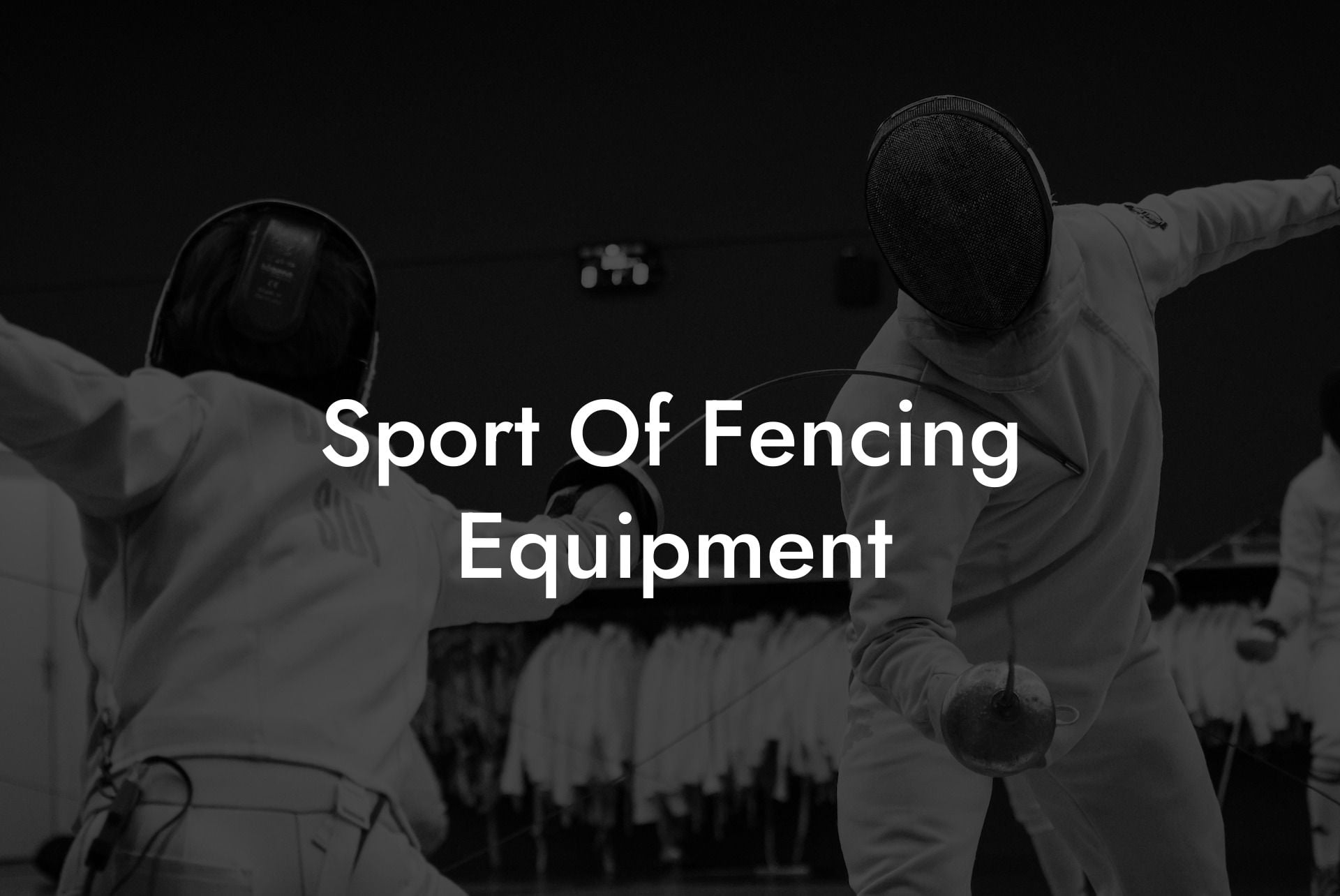Discover the world of fencing, an elegant and thrilling sport that combines physical prowess, mental agility, and the finesse of a true athlete. In this comprehensive guide, we delve into the essential equipment used in the sport of fencing, giving you an inside look at the tools that enable fencers to excel in this unique and captivating activity.
Sport Of Fencing Equipment Table of Contents
An Overview of Fencing Equipment
Fencing is a sport that requires discipline, precision, and a keen understanding of equipment. There are three primary categories of fencing - foil, epee, and sabre - each with its specific rules and specialized equipment. Let's explore the core pieces of fencing gear that are utilized across these disciplines.
Fencing Weapons
- Foil: A light thrusting weapon that targets the torso, neck, and groin area. The foil is designed with a flexible blade with a blunt tip to prevent injury.
- Epee: A heavier thrusting weapon, the epee targets the entire body. Like the foil, it features a flexible blade and blunt tip.
- Sabre: A cutting and thrusting weapon that targets everything above the waist (excluding the hands). It is lighter than an epee but has a stiffer blade than the foil.
Protective Gear
- Fencing Mask: A crucial piece of equipment, the fencing mask protects the head and face from accidental injuries. It is composed of a sturdy mesh material with padding for comfort and shock absorption.
- Fencing Jacket: A padded, long-sleeved jacket that offers protection for the upper body, the fencing jacket is cut differently depending on the discipline, providing additional protection to specific target areas.
- Plastron: Worn under the fencing jacket, the plastron is a protective underarm padding that supplies additional cushioning to the fencer's weapon arm.
- Glove: A thick, padded glove is worn on the weapon hand, safeguarding the fingers and hand from potential injury while providing a firm grip on the weapon.
- Breeches/Knickers: These knee-length pants offer protection and flexibility for the fencer's lower half, which is essential during lunges and other dynamic movements.
- Fencing Socks and Shoes: Specific fencing socks are used to cover the area between the bottom of the breeches and the shoes, while fencing shoes are designed with a unique grip to provide stability during fast footwork.
Additional Accessories
- Chest Protectors: These are worn by both male and female fencers, providing additional safety to the chest region.
- Lame: A conductive, metallic vest worn over the fencing jacket, the lame is used in foil and sabre fencing to register touches electronically.
- Body Cord: An essential component for electric scoring in all disciplines, the body cord connects the fencer's weapon to the scoring system.
Sport Of Fencing Equipment Example:
Imagine yourself stepping onto the fencing strip, decked out in your protective gear - your fencing mask securely fastened, fencing jacket zipped up, and plastron positioned for optimal safety. You grip your weapon of choice - be it foil, epee, or sabre - and prepare to engage in a thrilling battle of wits and physical prowess against your opponent. With each precise lunge, parry, and riposte, your well-chosen equipment enables you to perform at your peak, while ensuring your safety and comfort throughout each bout.
Now that we've provided you with an in-depth look into the crucial equipment used in the sport of fencing, you're well on your way to understanding the intricacies of this fascinating pastime. Whether you're a seasoned fencer or just beginning to explore the world of fencing, the Anchorage Fencing Club is your go-to resource for everything fencing-related. Don't forget to share this article with fellow fencing enthusiasts or those who may be interested in taking up the sport. And as always, make sure to check out our other informative guides to further your knowledge and appreciation of the art of fencing.













